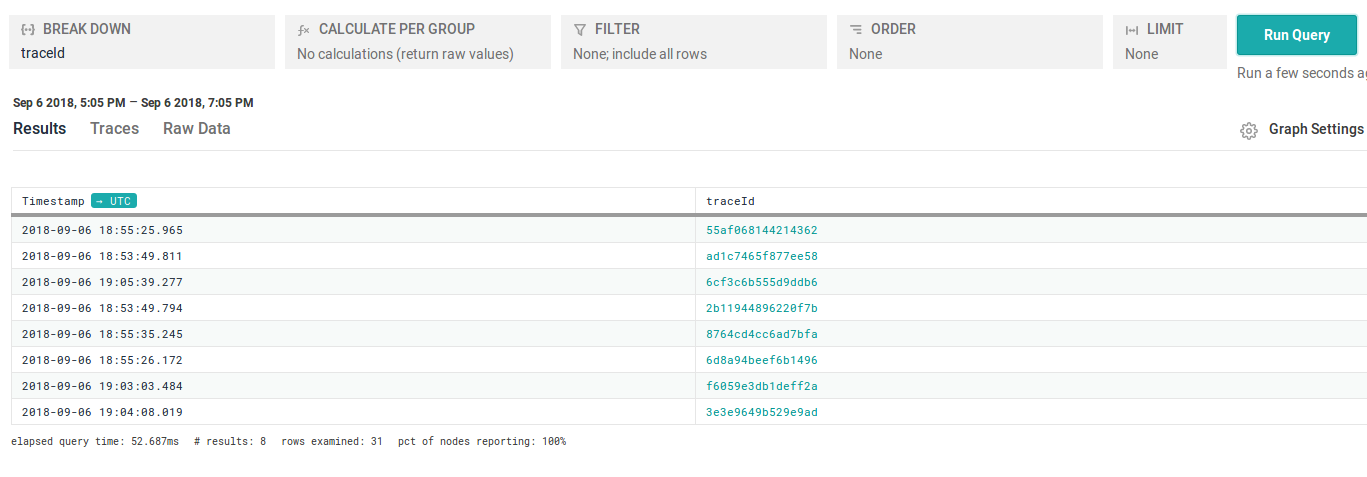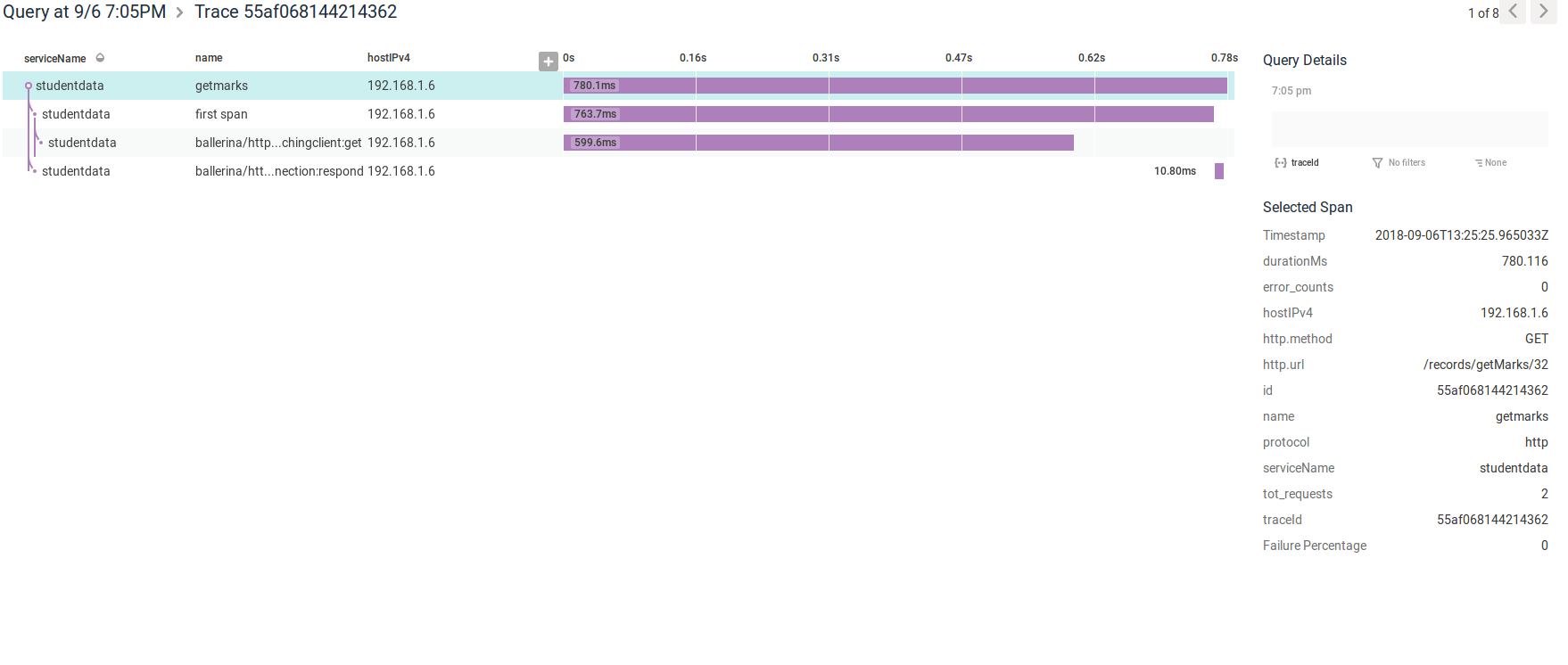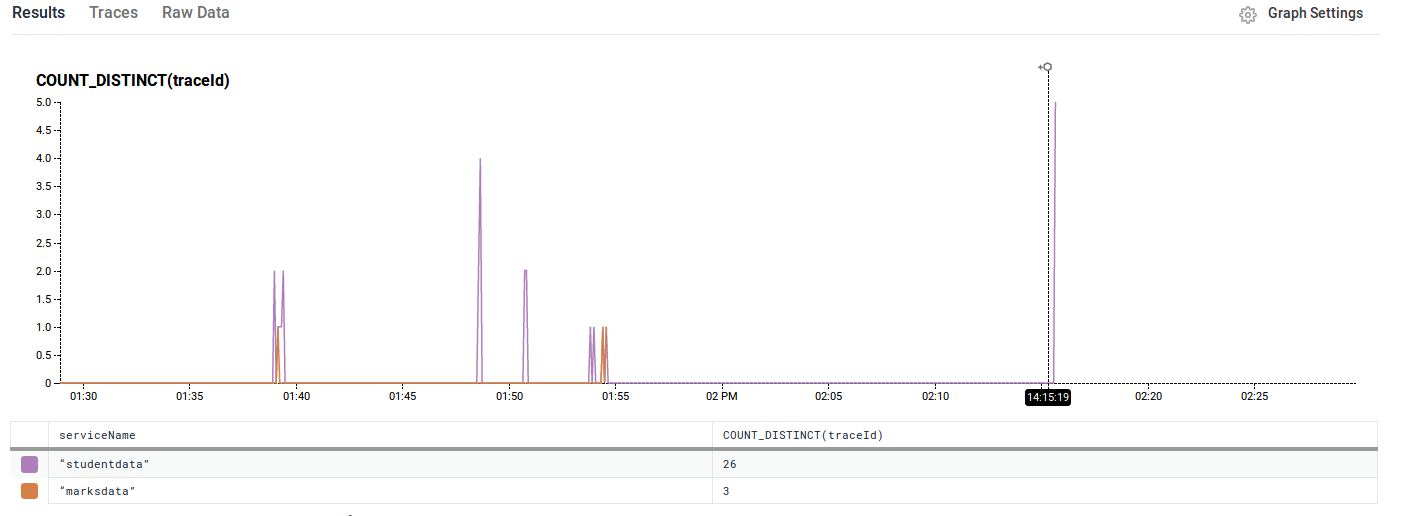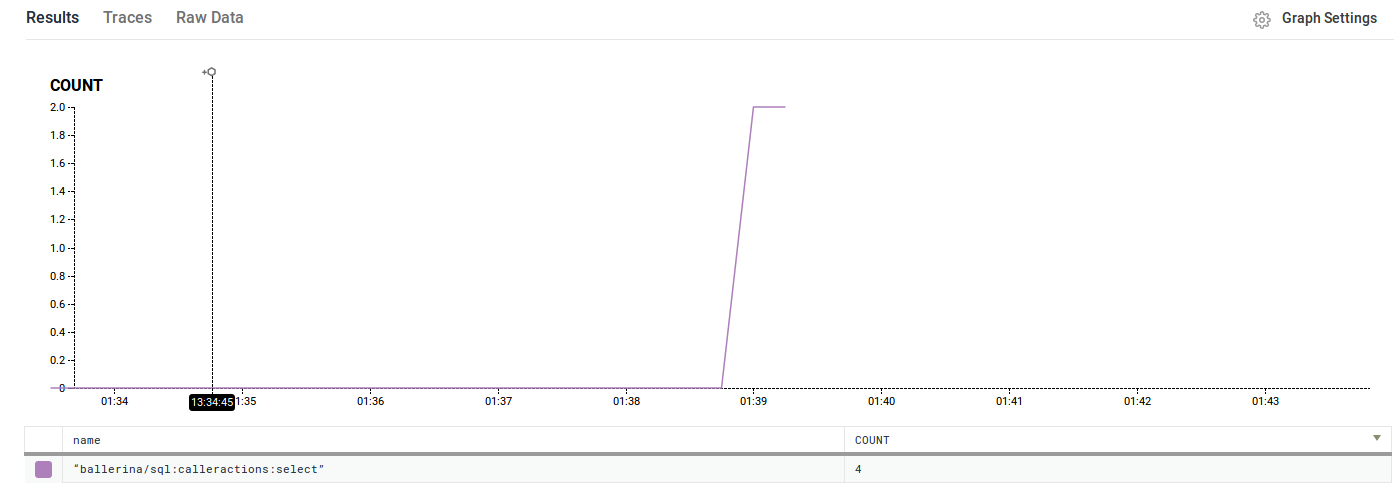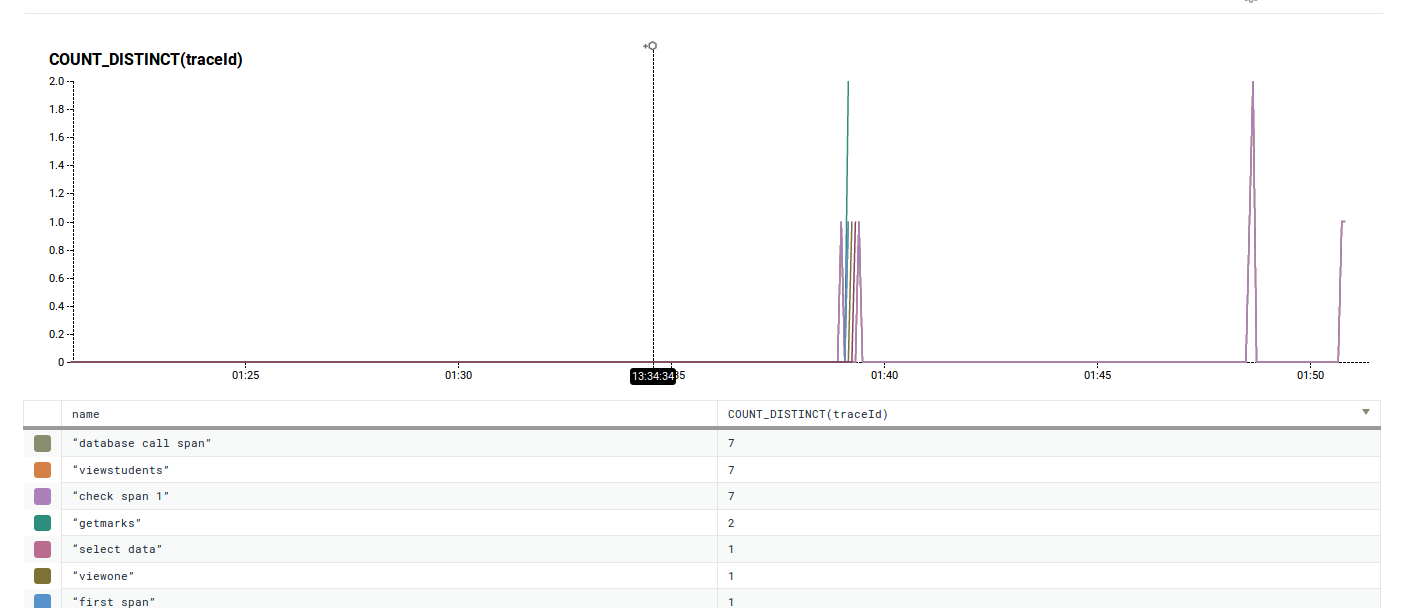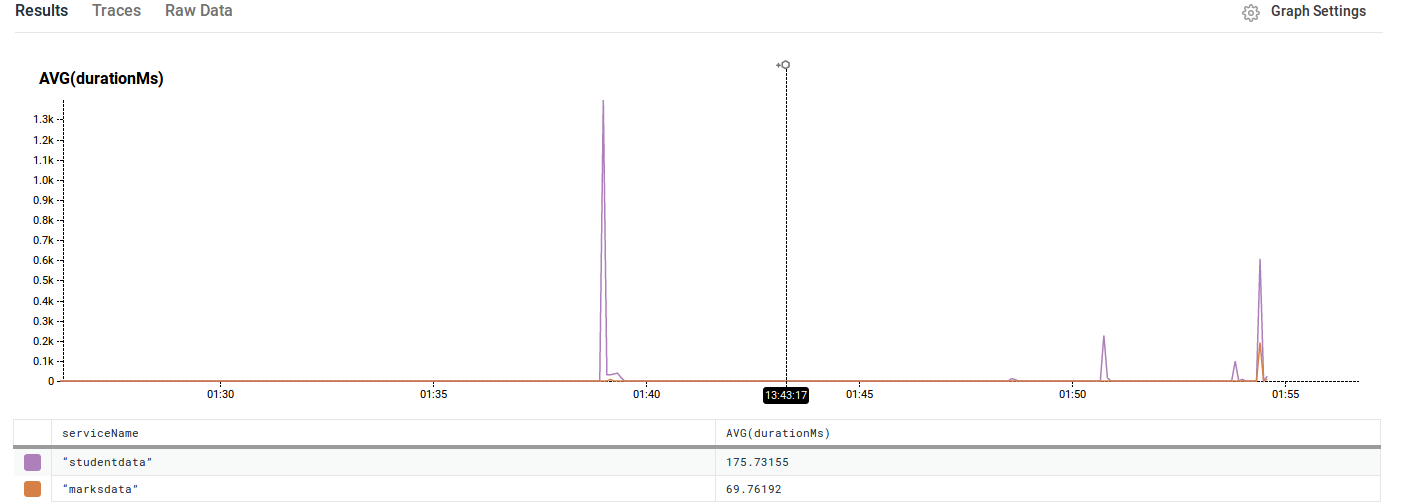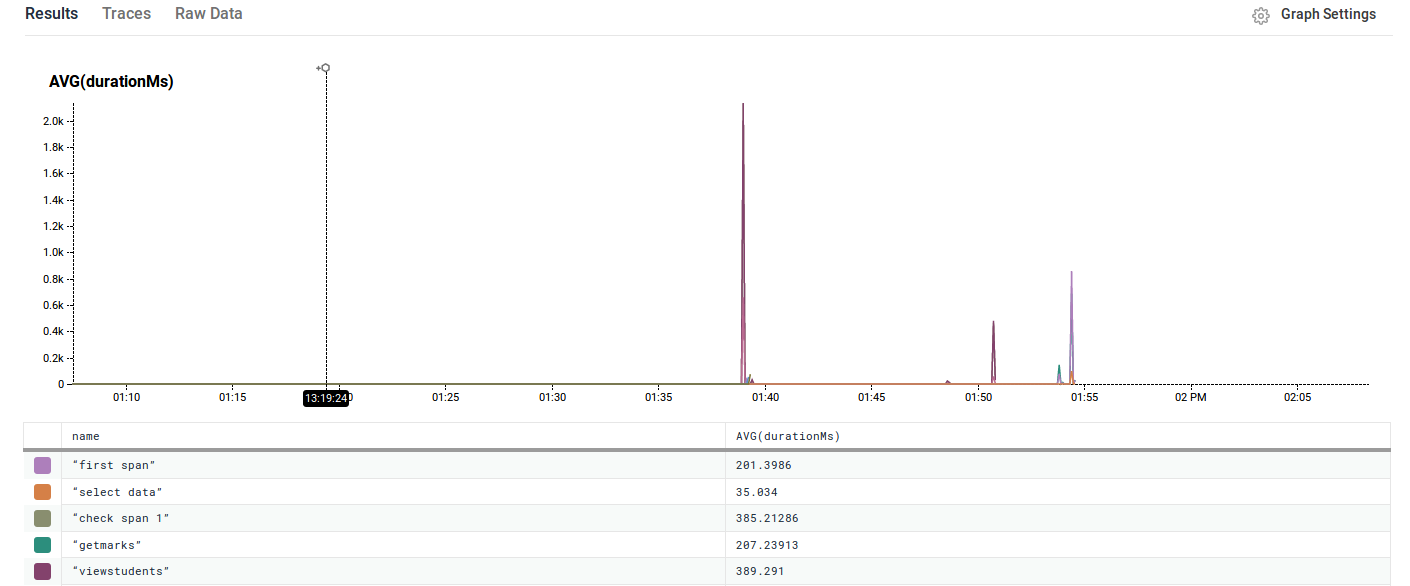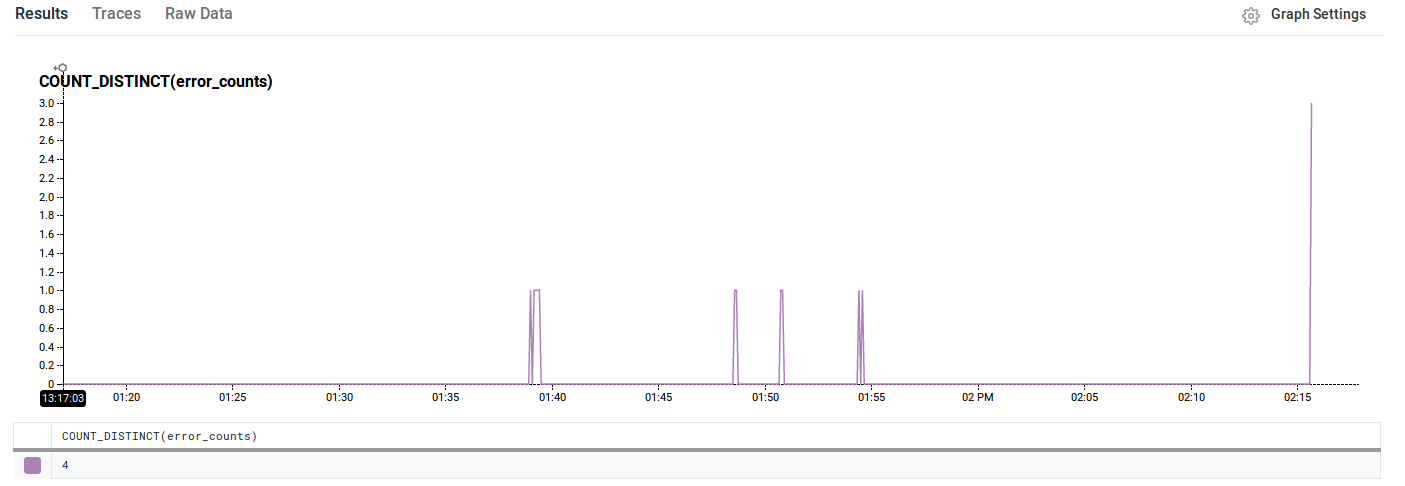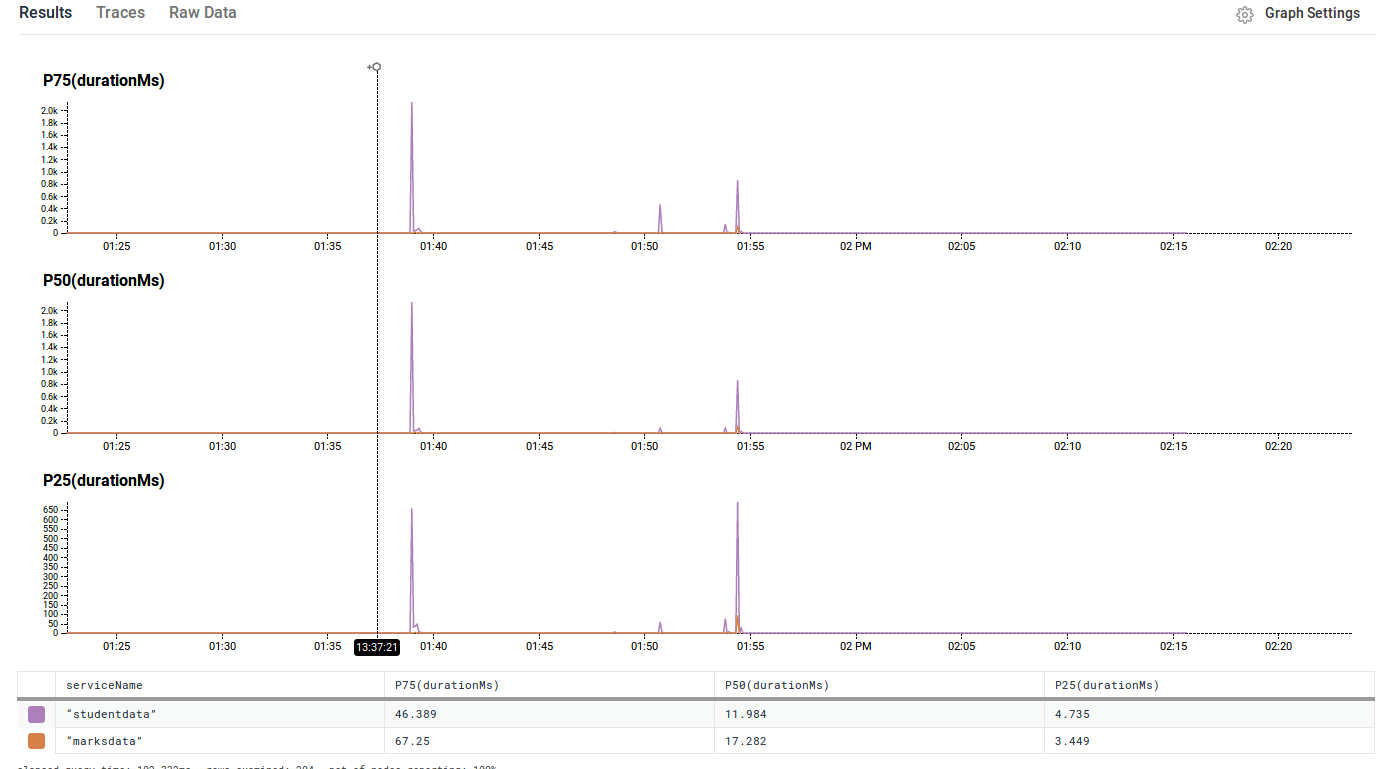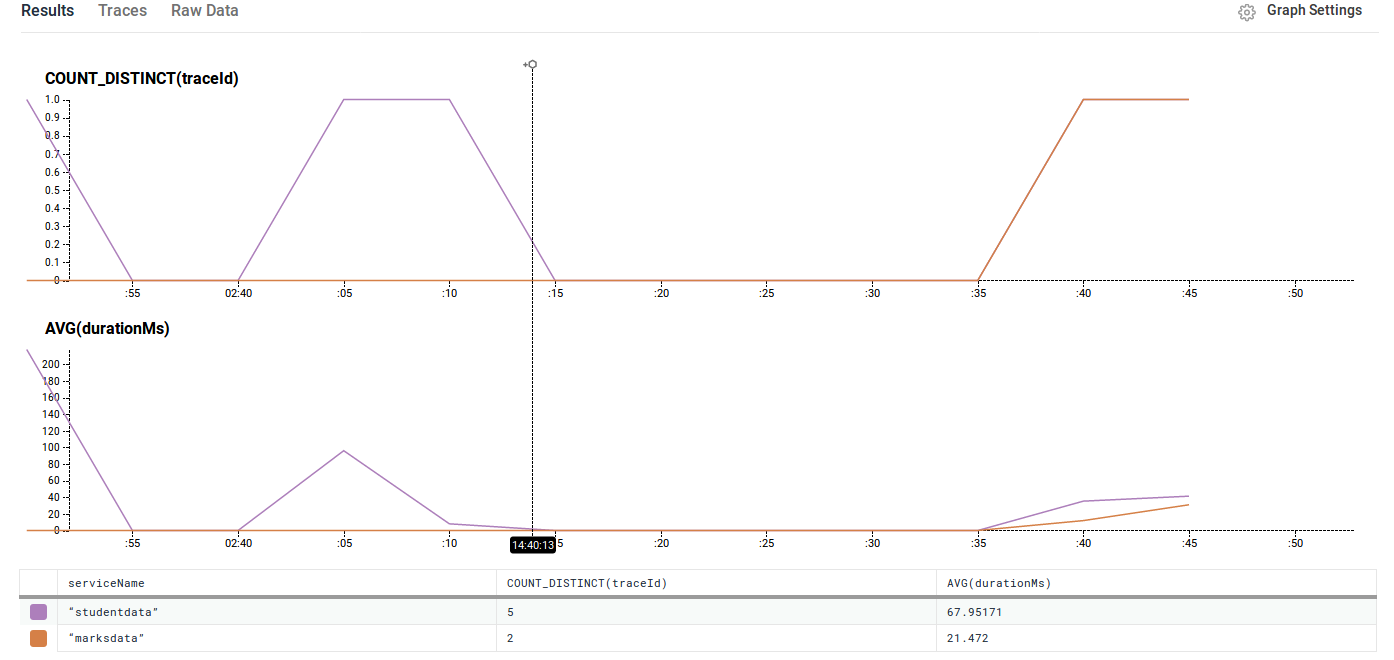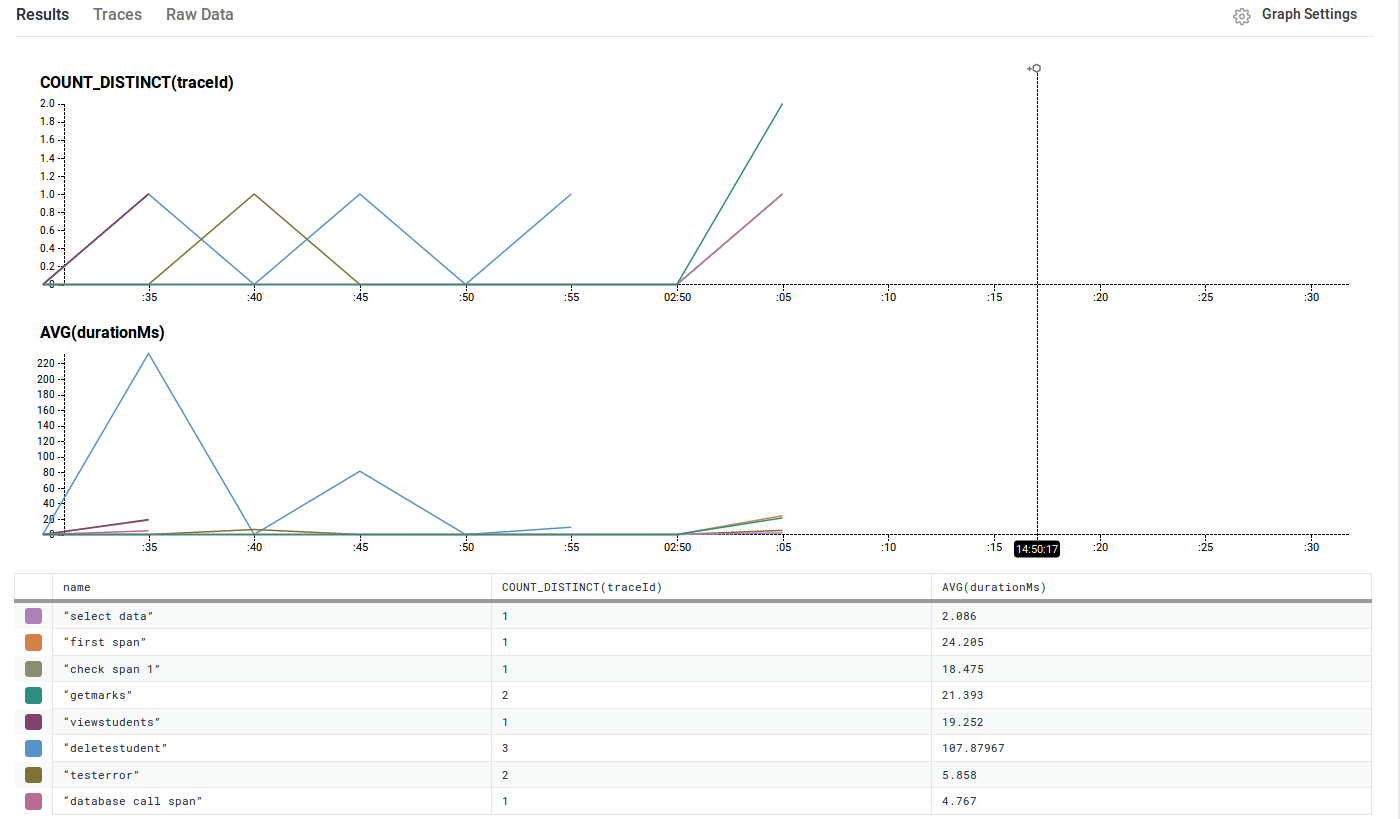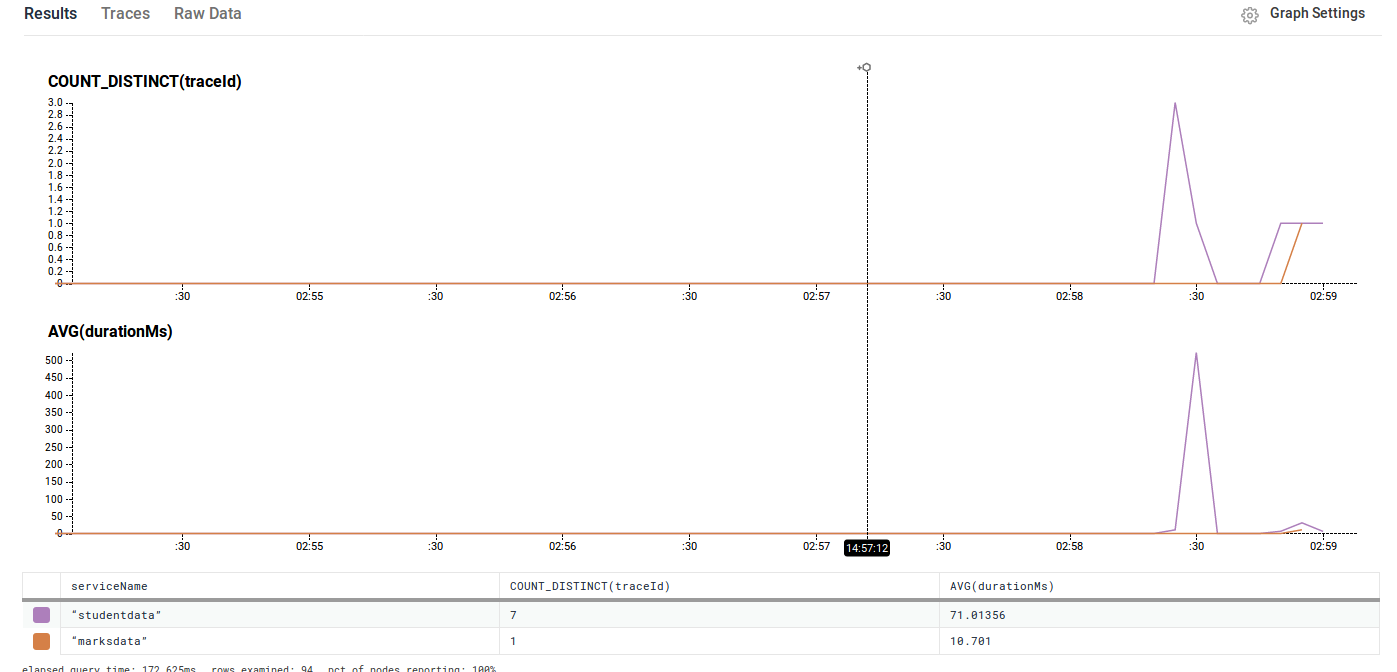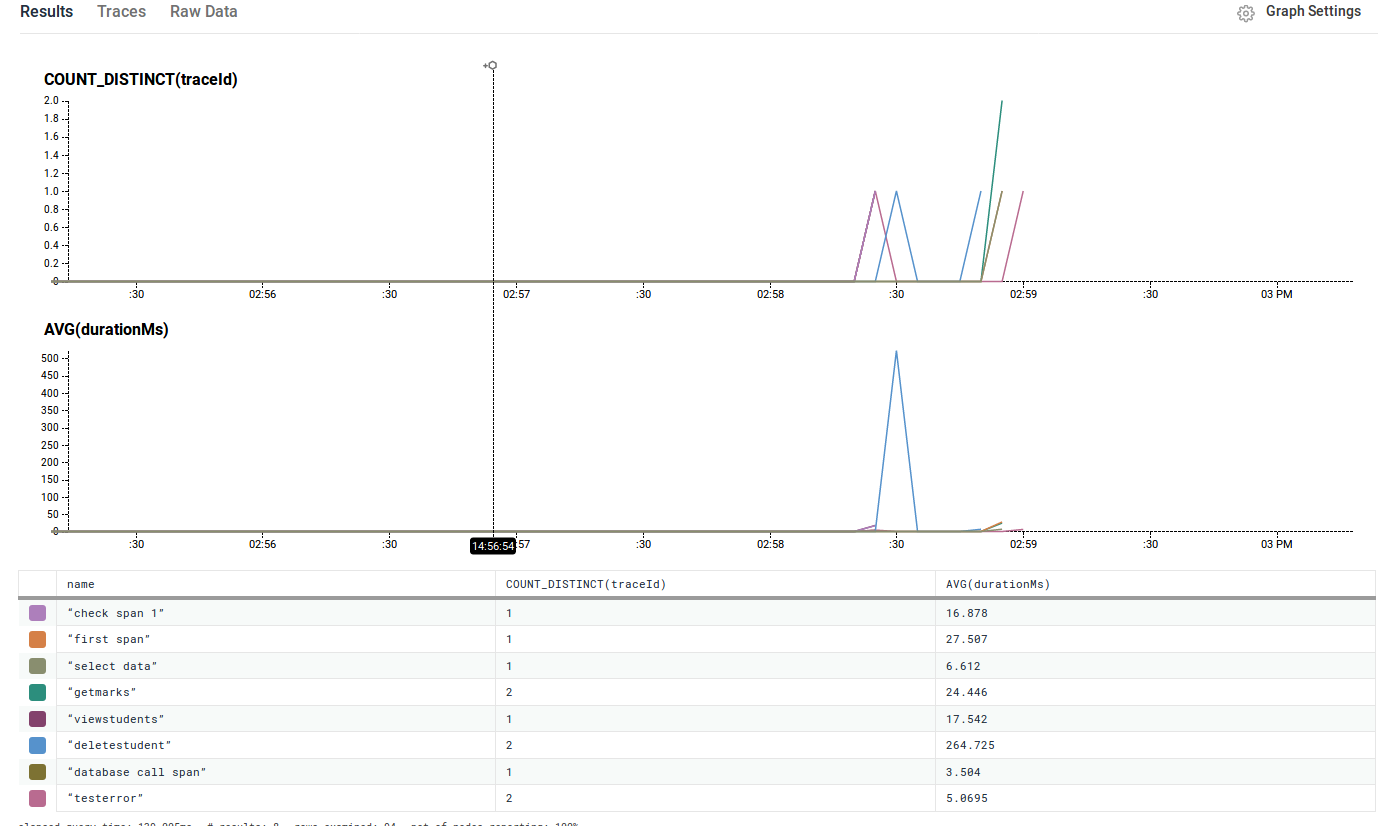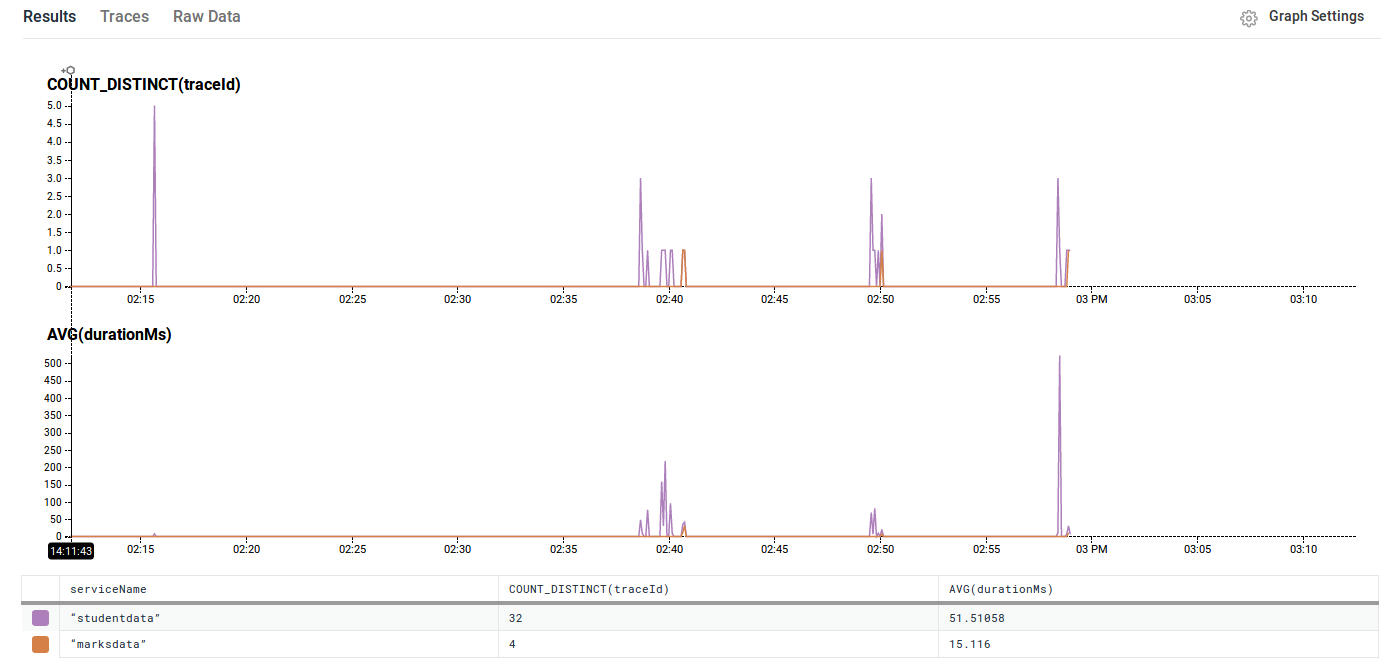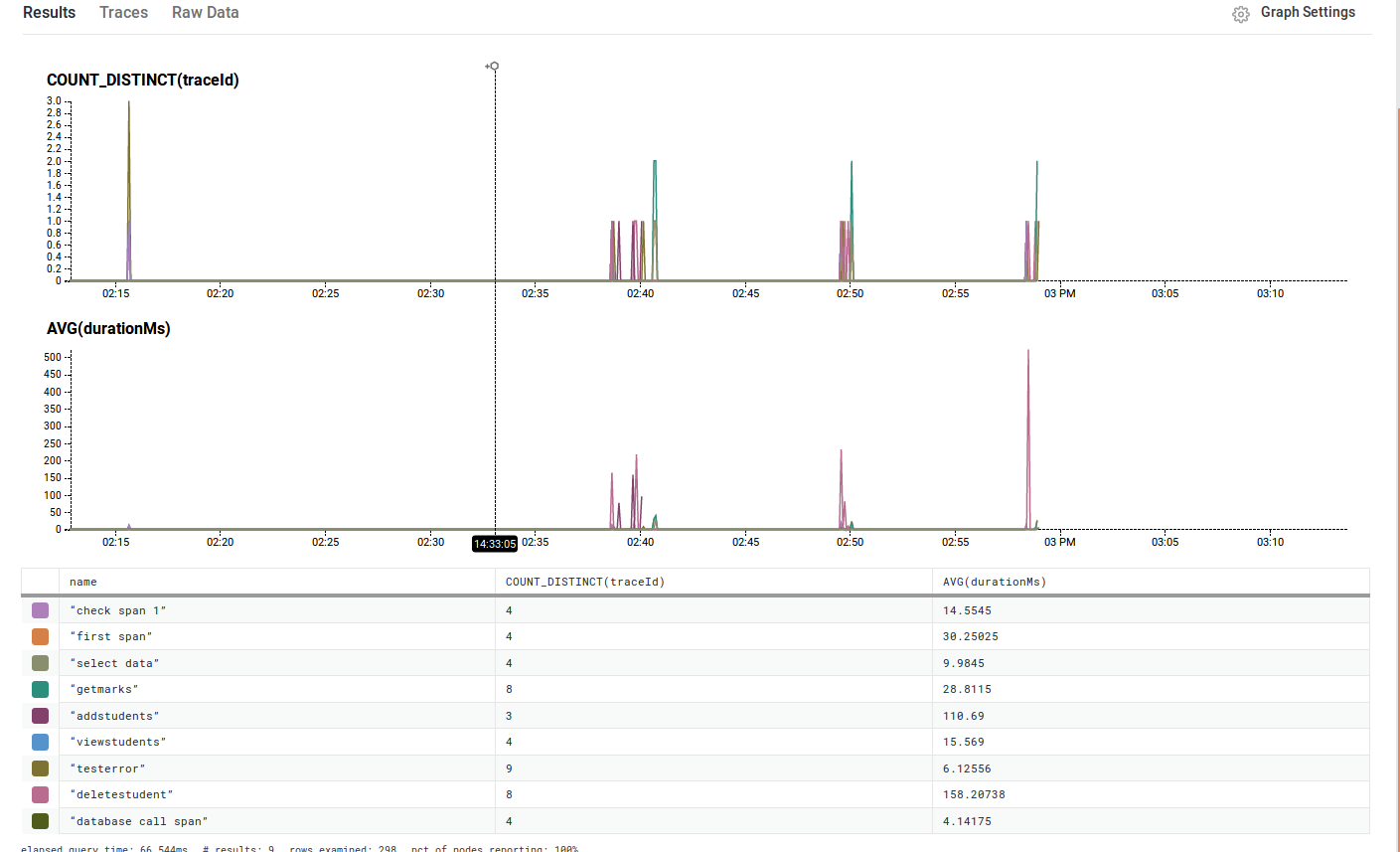Honeycomb is a tool used to investigate how well your system works in various conditions (for example - high traffic). Through Honeycomb, you can collect data pertaining to your software that can be broken down into various entities. You can observe the performance of each of these entities specifically.
This guide provides instructions on how Ballerina can be used to integrate with Honeycomb.
The following are the sections available in this guide.
To perform this integration with Honeycomb, a real world use case of a very simple student management system is used. This system will illustrate the manipulation of student details in a school/college management system. The administrator will be able to perform the following actions in this service.
- Add a student's details to the system.
- List down all the student's details who are registered in the system.
- Delete a student's details from the system by providing student ID.
- Generate a mock error (for observability purposes).
- Get a student's marks list by providing student ID.
- Make Requests : To perform actions on student management service, a console-based client program has been written in Ballerina for your ease of making requests.
- Ballerina Distribution
- A Text Editor or an IDE
Tip: For a better development experience, install one of the following Ballerina IDE plugins: VSCode, IntelliJ IDEA
If you want to skip the basics, you can download the GitHub repo and continue from the Testing section.
- Start MySQL server in your local machine.
- Create a database with name
testdbin your MySQL localhost. If you want to skip the database implementation, then directly import the testdb.sql file into your localhost. You can find it in the GitHub repo.
For the purpose of this guide, let's use the following package structure.
ballerina-honeycomb
└── guide
├── students
│ ├── student_management_service.bal
│ ├── student_marks_management_service.bal
├── client_service
| └── client_main.bal
└── ballerina.conf
-
Create the above directories in your local machine, along with the empty
.balfiles. -
Add the following lines in your ballerina.conf to send the service traces to Honeycomb in Zipkin format using Opentracing.
[b7a.observability.tracing]
enabled=true
name="zipkin"
[b7a.observability.tracing.zipkin]
reporter.hostname="localhost"
reporter.port=9411
# Here the reporter API is set up in order to send spans. API version v1 is used as the honeycomb-opentracing supports the V1 version.
reporter.api.context="/api/v1/spans"
reporter.api.version="v1"
reporter.compression.enabled=false- Open the terminal, navigate to
ballerina-honeycomb/guide, and run Ballerina project initializing toolkit.
$ ballerina init
-
Clone and build the ballerina-zipkin-extension in the following repository https://github.com/ballerina-platform/ballerina-observability/tree/master/tracing-extensions/modules.
-
After building this extension, navigate to
ballerina-zipkin-extension>/target/distribution/and copy all the JAR files to your bre/lib folder in your Ballerina distribution.
Now let us look into the implementation of the student management service with observability.
// Copyright (c) 2018 WSO2 Inc. (http://www.wso2.org) All Rights Reserved.
//
// WSO2 Inc. licenses this file to you under the Apache License,
// Version 2.0 (the "License"); you may not use this file except
// in compliance with the License.
// You may obtain a copy of the License at
//
// http://www.apache.org/licenses/LICENSE-2.0
//
// Unless required by applicable law or agreed to in writing,
// software distributed under the License is distributed on an
// "AS IS" BASIS, WITHOUT WARRANTIES OR CONDITIONS OF ANY
// KIND, either express or implied. See the License for the
// specific language governing permissions and limitations
// under the License.
import ballerina/http;
import ballerina/io;
import ballerina/log;
import ballerina/mysql;
import ballerina/observe;
import ballerina/runtime;
// Type Student is created to store details of a student.
type Student record {
int id;
int age;
string name;
int mobNo;
string address;
};
// Endpoint for marks details client.
http:Client marksServiceEP = new("http://localhost:9191");
// Endpoint for MySQL client.
mysql:Client studentDB = new({
host: "localhost",
port: 3306,
name: "testdb",
username: "root",
password: "",
dbOptions: { useSSL: false }
});
// Listener of the student service port.
listener http:Listener studentServiceListener = new(9292);
// Service configuration of the student data service..
@http:ServiceConfig {
basePath: "/records"
}
service studentData on studentServiceListener {
int errors = 0;
int requestCounts = 0;
// Resource configuration for adding students to the system.
@http:ResourceConfig {
methods: ["POST"],
path: "/addStudent"
}
// Add Students resource used to add student records to the system.
resource function addStudents(http:Caller caller, http:Request request) {
// Initialize an empty HTTP response message.
studentData.requestCounts += 1;
http:Response response = new;
// Accepting the JSON payload sent from a request.
json|error payloadJson = request.getJsonPayload();
if (payloadJson is json) {
//Converting the payload to Student type.
Student|error studentDetails = Student.convert(payloadJson);
if (studentDetails is Student) {
io:println(studentDetails);
// Calling the function insertData to update database.
json returnValue = insertData(untaint studentDetails.name, untaint studentDetails.age, untaint studentDetails.mobNo, untaint studentDetails.address);
response.setJsonPayload(untaint returnValue);
} else {
log:printError("Error in converting JSON payload to student type", err = studentDetails);
}
} else {
log:printError("Error obtaining the JSON payload", err = payloadJson);
}
// The below function adds tags to be passed as metrics in the message traces. These tags are added to the default system span.
_ = observe:addTagToSpan("tot_requests", <string>studentData.requestCounts);
_ = observe:addTagToSpan("error_counts", <string>studentData.errors);
// Send the response back to the client with the returned JSON value from insertData function.
var result = caller->respond(response);
if (result is error) {
// Log the error for the service maintainers.
log:printError("Error in sending response to the client", err = result);
}
}
// Resource configuration for viewing details of all the students in the system.
@http:ResourceConfig {
methods: ["POST"],
path: "/viewAll"
}
// View students resource is to get all the students details and send to the requested user.
resource function viewStudents(http:Caller caller, http:Request request) {
studentData.requestCounts += 1;
int|error childSpanId = observe:startSpan("Obtain details span");
http:Response response = new;
json status = {};
int spanId2 = observe:startRootSpan("Database call span");
// Sending a request to MySQL endpoint and getting a response with required data table.
var returnValue = studentDB->select("SELECT * FROM student", Student, loadToMemory = true);
_ = observe:finishSpan(spanId2);
// A table is declared with Student as its type.
table<Student> dataTable = table{};
if (returnValue is error) {
log:printError("Error in fetching students data from the database", err = returnValue);
} else {
dataTable = returnValue;
}
// Student details displayed on server side for reference purpose.
foreach var row in dataTable {
io:println("Student:" + row.id + "|" + row.name + "|" + row.age);
}
// Table is converted to JSON.
var jsonConversionValue = json.convert(dataTable);
if (jsonConversionValue is error) {
log:printError("Error in converting the data from a tabular format to JSON.", err = jsonConversionValue);
} else {
status = jsonConversionValue;
}
// Sending back the converted JSON data to the request made to this service.
response.setJsonPayload(untaint status);
var result = caller->respond(response);
if (result is error) {
log:printError("Error in sending the response", err = result);
}
if (childSpanId is int) {
_ = observe:finishSpan(childSpanId);
} else {
log:printError("Error attaching span ", err = childSpanId);
}
//The below function adds tags to be passed as metrics in the message traces. These tags are added to the default system span.
_ = observe:addTagToSpan("tot_requests", <string>studentData.requestCounts);
_ = observe:addTagToSpan("error_counts", <string>studentData.errors);
}
// Resource configuration for making a mock error to the system.
@http:ResourceConfig {
methods: ["GET"],
path: "/testError"
}
// Resource to generate a mock error for testing purposes.
resource function testError(http:Caller caller, http:Request request) {
studentData.requestCounts += 1;
http:Response response = new;
studentData.errors += 1;
io:println(studentData.errors);
// The below function adds tags to be passed as metrics in the message traces. These tags are added to the default system span.
_ = observe:addTagToSpan("tot_requests", <string>studentData.requestCounts);
_ = observe:addTagToSpan("error_counts", <string>studentData.errors);
log:printError("error test");
response.setTextPayload("Test Error made");
var result = caller->respond(response);
if (result is error) {
log:printError("Error in sending response to the client", err = result);
}
}
// Resource configuration for deleting the details of a student from the system.
@http:ResourceConfig {
methods: ["GET"],
path: "/deleteStu/{studentId}"
}
// Delete Students resource for deleteing a student using id.
resource function deleteStudent(http:Caller caller, http:Request request, int studentId) {
studentData.requestCounts += 1;
http:Response response = new;
json status = {};
// Calling the deleteData function with the studentId as the parameter and getting a JSON object returned.
var returnValue = deleteData(studentId);
io:println(returnValue);
// Pass the obtained JSON object to the request.
response.setJsonPayload(returnValue);
var result = caller->respond(response);
if (result is error) {
log:printError("Error in sending response to the client", err = result);
}
// The below function adds tags to be passed as metrics in the message traces. These tags are added to the default system span.
_ = observe:addTagToSpan("tot_requests", <string>studentData.requestCounts);
_ = observe:addTagToSpan("error_counts", <string>studentData.errors);
}
// Resource configuration for getting the marks of a particular student.
@http:ResourceConfig {
methods: ["GET"],
path: "/getMarks/{studentId}"
}
// Get marks resource for obtaining marks of a particular student.
resource function getMarks(http:Caller caller, http:Request request, int studentId) {
studentData.requestCounts += 1;
http:Response response = new;
json result = {};
// Self-defined span for observability purposes.
int|error firstSpan = observe:startSpan("First span");
// Request to be sent to the to marks Service for obtaining the marks of the student with the respective studentId.
var requestReturn = marksServiceEP->get("/marks/getMarks/" + untaint studentId);
if (requestReturn is error) {
log:printError("Error in fetching marks from the system.", err = requestReturn);
} else {
var msg = requestReturn.getJsonPayload();
if (msg is error) {
log:printError("Error in extracting the JSON payload from the response", err = msg);
} else {
result = msg;
}
}
// Stopping the previously started span.
if (firstSpan is int) {
_ = observe:finishSpan(firstSpan);
} else {
log:printError("Error attaching span ", err = firstSpan);
}
//Sending the JSON to the client.
response.setJsonPayload(untaint result);
var resResult = caller->respond(response);
if (resResult is error) {
log:printError("Error in sending response to the client", err = resResult);
}
// The below function adds tags to be passed as metrics in the message traces. These tags are added to the default system span.
_ = observe:addTagToSpan("tot_requests", <string>studentData.requestCounts);
_ = observe:addTagToSpan("error_counts", <string>studentData.errors);
}
}
// Function to insert values to the database..
# `insertData()` is a function to add data to student records database.
#
# + name - This is the name of the student to be added.
# + age -Student age.
# + mobNo -Student mobile number.
# + address - Student address.
# + return - This function returns a JSON object. If data is added it returns JSON containing a status and id of student
# added. If data is not added , it returns the JSON containing a status and error message.
public function insertData(string name, int age, int mobNo, string address) returns (json) {
json updateStatus = { "Status": "Data Inserted " };
int uniqueId = 0;
string sqlString = "INSERT INTO student (name, age, mobNo, address) VALUES (?,?,?,?)";
// Insert data to SQL database by invoking update action.
var returnValue = studentDB->update(sqlString, name, age, mobNo, address);
if (returnValue is int) {
table<Student> result = getId(untaint mobNo);
while (result.hasNext()) {
var returnValue2 = result.getNext();
if (returnValue2 is Student) {
uniqueId = returnValue2.id;
} else {
log:printError("Error in obtaining a student ID from the database for the added student.", err = returnValue2);
}
}
if (uniqueId != 0) {
updateStatus = { "Status": "Data Inserted Successfully", "id": uniqueId };
} else {
updateStatus = { "Status": "Data Not inserted" };
}
} else {
log:printError("Error in adding the data to the database", err = returnValue);
}
return updateStatus;
}
# Function to delete data of a student from the database..
# `deleteData()` is a function to delete a student's data from student records database.
#
# + studentId - This is the id of the student to be deleted.
# + return -This function returns a JSON object. If data is deleted it returns JSON containing a status.
# If data is not deleted , it returns the JSON containing a status and error message.
public function deleteData(int studentId) returns (json) {
json status = {};
string sqlString = "DELETE FROM student WHERE id = ?";
// Invoking an update action to delete existing data from the database.
var returnValue = studentDB->update(sqlString, studentId);
io:println(returnValue);
if (returnValue is int) {
if (returnValue != 1) {
status = { "Status": "Data Not Found" };
} else {
status = { "Status": "Data Deleted Successfully" };
}
} else {
log:printError("Error in removing data from the database", err = returnValue);
status = { "Status": "Data Not Deleted" };
}
return status;
}
# `getId()` is a function to get the Id of the student added in latest.
#
# + mobNo - This is the mobile number of the student added which is passed as parameter to build up the query.
# + return -This function returns a table with Student type.
// Function to get the generated Id of the student recently added.
public function getId(int mobNo) returns table<Student> {
//Select data from database by invoking select action.
string sqlString = "SELECT * FROM student WHERE mobNo = ?";
// Retrieve student data by invoking select remote function defined in ballerina sql client
var returnValue = studentDB->select(sqlString, Student, mobNo);
table<Student> dataTable = table{};
if (returnValue is error) {
log:printError("Error in obtaining the student ID from the database to retrieve the marks of the student.
", err = returnValue);
} else {
dataTable = returnValue;
}
return dataTable;
}
Now we will look into the implementation of obtaining the marks of the students from database through another service.
// Copyright (c) 2018 WSO2 Inc. (http://www.wso2.org) All Rights Reserved.
//
// WSO2 Inc. licenses this file to you under the Apache License,
// Version 2.0 (the "License"); you may not use this file except
// in compliance with the License.
// You may obtain a copy of the License at
//
// http://www.apache.org/licenses/LICENSE-2.0
//
// Unless required by applicable law or agreed to in writing,
// software distributed under the License is distributed on an
// "AS IS" BASIS, WITHOUT WARRANTIES OR CONDITIONS OF ANY
// KIND, either express or implied. See the License for the
// specific language governing permissions and limitations
// under the License.
import ballerina/http;
import ballerina/io;
import ballerina/log;
import ballerina/mysql;
import ballerina/observe;
import ballerina/runtime;
// Type Marks is created to represent a set of marks.
type Marks record {
int studentId;
int maths;
int english;
int science;
};
// Listener for the port of the marks service.
listener http:Listener marksServiceListener = new(9191);
// Service configuration of the marks service.
@http:ServiceConfig {
basePath: "/marks"
}
service MarksData on marksServiceListener {
// Resource configuration for retrieving the marks of a student from the system.
@http:ResourceConfig {
methods: ["GET"],
path: "/getMarks/{stuId}"
}
// Resource used to get student's marks.
resource function getMarks(http:Caller caller, http:Request request, int stuId) {
http:Response response = new;
json result = findMarks(untaint stuId);
// Pass the obtained JSON object to the requested client.
response.setJsonPayload(untaint result);
var resResult = caller->respond(response);
if (resResult is error) {
log:printError("Error in sending response to the client", err = resResult);
}
}
}
# `findMarks()`is a function to find a student's marks from the marks record database.
#
# + stuId - This is the id of the student.
# + return - This function returns a JSON object. If data is added it returns JSON containing a status and id of student added.
# If data is not added , it returns the JSON containing a status and error message.
public function findMarks(int stuId) returns (json) {
json status = {};
string sqlString = "SELECT * FROM marks WHERE student_Id = " + stuId;
// Getting student marks of the given ID.
// Invoking select operation in testDB.
var returnValue = studentDB->select(sqlString, Marks, loadToMemory = true);
// Assigning data obtained from db to a table.
table<Marks> dataTable = table {};
if (returnValue is table<Marks>) {
dataTable = returnValue;
} else {
log:printError("Error in fetching the data table from the database", err = returnValue);
status = { "Status": "Select data from student table failed: " };
return status;
}
// Converting the obtained data in table format to JSON data.
var jsonConversionValue = json.convert(dataTable);
if (jsonConversionValue is json) {
status = jsonConversionValue;
} else {
status = { "Status": "Data Not available" };
log:printError("Error in converting the fetched data from tabular format to JSON.", err = jsonConversionValue);
}
return status;
}
Lets look at the client implementation.
// Copyright (c) 2018 WSO2 Inc. (http://www.wso2.org) All Rights Reserved.
//
// WSO2 Inc. licenses this file to you under the Apache License,
// Version 2.0 (the "License"); you may not use this file except
// in compliance with the License.
// You may obtain a copy of the License at
//
// http://www.apache.org/licenses/LICENSE-2.0
//
// Unless required by applicable law or agreed to in writing,
// software distributed under the License is distributed on an
// "AS IS" BASIS, WITHOUT WARRANTIES OR CONDITIONS OF ANY
// KIND, either express or implied. See the License for the
// specific language governing permissions and limitations
// under the License.
import ballerina/http;
import ballerina/io;
import ballerina/log;
// Host name of the server hosting the student administration system.
http:Client studentService = new("http://localhost:9292");
public function main() {
http:Request req = new;
int operation = 0;
while (operation != 6) {
// Print options menu to choose from.
io:println("Select operation.");
io:println("1. Add student");
io:println("2. View all students");
io:println("3. Delete a student");
io:println("4. Make a mock error");
io:println("5: Get a student's marks");
io:println("6. Exit \n");
// Read user's choice.
string choice = io:readln("Enter choice 1 - 5: ");
if (!isInteger(choice)) {
io:println("Choice must be of a number");
io:println();
continue;
}
var intOperation = int.convert(choice);
if (intOperation is int) {
io:println(intOperation);
operation = intOperation;
} else {
log:printError("Error in converting the option selected by the user to an integer.", err = intOperation);
}
// Program runs until the user inputs 6 to terminate the process.
match operation {
1 => addStudent(req);
2 => viewAllStudents();
3 => deleteStudent();
4 => makeError();
5 => getMarks();
6 => break;
_ => io:println("Invalid choice");
}
}
}
// Function to check if the input is an integer.
function isInteger(string input) returns boolean {
string regEx = "\\d+";
boolean|error isInt = input.matches(regEx);
if (isInt is error) {
log:printError("Error in checking if the type of the input variable is integer", err = isInt);
return false;
} else {
return isInt;
}
}
// Function to add details of a student to the database.
function addStudent(http:Request req) {
// Get student name, age mobile number, address.
var name = io:readln("Enter Student name: ");
var age = io:readln("Enter Student age: ");
var mobile = io:readln("Enter mobile number: ");
var add = io:readln("Enter Student address: ");
var ageAsInt = int.convert(age);
var mobNoAsInt = int.convert(mobile);
if (ageAsInt is int && mobNoAsInt is int) {
// Create the request as JSON message.
json jsonMsg = { "name": name, "age": ageAsInt, "mobNo": mobNoAsInt, "address": add, "id": 0 };
req.setJsonPayload(jsonMsg);
} else {
log:printError("Error in converting the age and the mobile number to integers.", err = ageAsInt);
return;
}
// Sending the request to the students service and getting the response from it.
var resp = studentService->post("/records/addStudent", req);
if (resp is http:Response) {
// Extracting data from the received JSON object..
var jsonMsg = resp.getJsonPayload();
if (jsonMsg is json) {
string message = "Status: " + jsonMsg["Status"] .toString() + " Added Student Id :- " +
jsonMsg["id"].toString();
io:println(message);
} else {
log:printError("Error in extracting the JSON payload from the response.", err = jsonMsg);
}
} else {
log:printError("Error in the obtained response", err = resp);
}
}
// Function to view details of all the students.
function viewAllStudents() {
// Sending a request to list down all students and get the response from it.
var response = studentService->post("/records/viewAll", null);
if (response is http:Response) {
var jsonMsg = response.getJsonPayload();
if (jsonMsg is json) {
string message = "";
if (jsonMsg.length() >= 1) {
int i = 0;
while (i < jsonMsg.length()) {
message = "Student Name: " + jsonMsg[i]["name"] .toString() + ", " + " Student Age: " +
jsonMsg[i]["age"] .toString();
io:println(message);
i += 1;
}
} else {
// Notify user if no records are available.
message = "\n Student record is empty";
io:println(message);
}
} else {
log:printError("Error in extracting JSON from response", err = jsonMsg);
}
} else {
log:printError("Error in obtained response", err = resp);
}
}
// Function to delete a student's data from the system.
function deleteStudent() {
// Get student id.
string id = io:readln("Enter student id: ");
// Request made to find the student with the given id and get the response from it.
var resp = studentService->get("/records/deleteStu/" + id);
if (resp is http:Response) {
var jsonMsg = resp.getJsonPayload();
if (jsonMsg is json) {
string message = jsonMsg["Status"].toString();
io:println("\n" + message + "\n");
} else {
log:printError("Error in extracting JSON from response", err = jsonMsg);
}
} else {
log:printError("Error in obtained response", err = resp);
}
}
// Function to generate a mock error in the system for observability purposes.
function makeError() {
var response = studentService->get("/records/testError");
if (response is http:Response) {
var msg = response.getTextPayload();
if (msg is string) {
io:println("\n" + msg + "\n");
} else {
log:printError("Error in fetching text from the response", err = msg);
}
} else {
log:printError("Error in the obtained response", err = response);
}
}
// Function to fetch marks of a student from the system.
function getMarks() {
// Gets the student ID.
var id = io:readln("Enter student id: ");
// Request made to get the marks of the student with given id and get the response from it.
var response = studentService->get("/records/getMarks/" + id);
if (response is http:Response) {
var jsonMsg = response.getJsonPayload();
if (jsonMsg is json) {
string message = "";
// Validate to check if student with given ID exist in the system.
if (jsonMsg.length() >= 1) {
message = "Maths: " + jsonMsg[0]["maths"] .toString() + " English: " + jsonMsg[0]["english"] .toString()
+
" Science: " + jsonMsg[0]["science"] .toString();
} else {
message = "Data not available. Check if student's mark is added or student might not be in our system.";
}
io:println("\n" + message + "\n");
} else {
log:printError("Error in extracting the JSON payload from the response.", err = jsonMsg);
}
} else {
log:printError("Error in the obtained response ", err = response);
}
}
- Now we have completed the implementation of student management service with marks management service.
You can start both services by opening a terminal, navigating to ballerina-honeycomb/guide, and executing the following command.
$ ballerina run --config <path-to-conf>/ballerina.conf students
You need to start the honeycomb-opentracing-proxy. This can be done by using Docker. Docker is used to pull the image for honeycomb-opentracing-proxy. Run the following command.
docker run -p 9411:9411 honeycombio/honeycomb-opentracing-proxy -k <APIKEY> -d <DATASET>
-
-k represent the API KEY you get when you sign up to your Honeycomb account.
-
-d represents the dataset to which the trace data are sent to.
You can observe the service performance by making some HTTP requests to the above services. This is made easy for you as there is a client program implemented. You can start the client program by opening another terminal and navigating to ballerina-honeycomb/guide and run the below command.
$ ballerina run client_service
After making HTTP requests, go to Honeycomb website then navigate to your dataset.
When you are in your dataset in Honeycomb UI you get to see a button called New query, and when you click on that you can write your own queries on the metrics that you have received.
- You are expected to see the traces as below when you include traceId in the breakdown category.
- To view a particular trace, click on the traceId column, and you will see as below
- To view span details with metrics click on a particular span and you are expected to see as below
You can perform some detailed queries in order to look deep in the performance of your services. Here are some examples:-
- Total requests
- Resources with high response time
- Counts of database manipulations
- Mostly hit resources
- Average response time
- Error detection
- Percentiles of response duration
- Last 1 minute summary
- Last 5 minutes summary
- Last 1 hour summary
This will include self defined spans as well
Query parameters use for each category:-
1. BREAK DOWN - name
2. CALCULATE PER GROUP - COUNT_DISTINCT(traceId)
3. FILTER - name does-not-start-with ballerina/
We filter out the other default ballerina resource using the filter query.
The result of the above query is as below : -
Query parameters use for each category:-
1. BREAK DOWN - serviceName
2. CALCULATE PER GROUP - COUNT_DISTINCT(traceId)
3. FILTER - name does-not-start-with ballerina/
4. LIMIT - 100
We filter out the other default ballerina resource using the filter query.
The result of the above query is as below : -
This will include self defined spans as well.
Query parameters use for each category:-
1. BREAK DOWN - name
2. CALCULATE PER GROUP - MAX(durationMs)
3. FILTER - name does-not-start-with ballerina/
4. ORDER - MAX(durationMs) desc
5. LIMIT - 100
We filter out the other default ballerina resource using the filter query.
The result of the above query is as follows : -
Query parameters use for each category:-
1. BREAK DOWN - name
2. CALCULATE PER GROUP - COUNT
3. FILTER - db.instance = testdb
4. ORDER - COUNT desc
5. LIMIT - 100
The result of the above query is as follows : -
This will include self defined spans as well.
Query parameters use for each category:-
1. BREAK DOWN - name
2. CALCULATE PER GROUP - COUNT_DISTINCT(traceId)
3. FILTER - name does-not-start-with ballerina/
4. ORDER - COUNT_DISTINCT(traceId) desc
5. LIMIT - 100
We filter out the other default ballerina resource using the filter query.
The result of the above query is as follows : -
Query parameters use for each category:-
1. BREAK DOWN - serviceName
2. CALCULATE PER GROUP - AVG(durationMs)
3. LIMIT - 100
The result of the above query is as follows : -
This will include self defined spans as well.
Query parameters use for each category:-
1. BREAK DOWN - name
2. CALCULATE PER GROUP - AVG(durationMs)
3. FILTER - name does-not-start-with ballerina/
4. LIMIT - 100
We filter out the other default ballerina resource using the filter query.
The result of the above query is as follows : -
Query parameters use for each category:-
1. CALCULATE PER GROUP - COUNT_DISTINCT(error_counts)
The result of the above query is as follows : -
Query parameters use for each category:-
1. BREAK DOWN - serviceName
2. CALCULATE PER GROUP - P75(durationMs),P50(durationMs), P25(durationMs)
The result of the above query is as follows : -
To find the total request count per service with average response time for the last 1 minute :-
Duration can be set on the top right corner of the query builder. You can customize the time period within which you wanted to get the metrics.
By the drop down menu you can customize the time period.
Query parameters use for each category:-
1. BREAK DOWN - serviceName
2. CALCULATE PER GROUP - AVG(durationMs), COUNT_DISTINCT(traceId)
3. FILTER - name does-not-start-with ballerina/
We filter out the other default ballerina resource using the filter query.
The result of the above query is as follows : -
This will include all self defined span as well when finding the number of requests per resource wit average response time. Set the time period to 1 minute as instructed above.
Query parameters use for each category:-
1. BREAK DOWN - name
2. CALCULATE PER GROUP - COUNT_DISTINCT(traceId), AVG(durationMs)
3. FILTER - name does-not-start-with ballerina/
4. LIMIT - 100
We filter out the other default ballerina resource using the filter query.
The result of the above query is as follows : -
To find the total request count per service with average response time for the last 5 minutes :-
Duration can be set on the top right corner of the query builder. You can customize the time period within which you wanted to get the metrics.
By the drop down menu you can customize the time period.
Query parameters use for each category:-
1. BREAK DOWN - serviceName
2. CALCULATE PER GROUP - AVG(durationMs), COUNT_DISTINCT(traceId)
3. FILTER - name does-not-start-with ballerina/
We filter out the other default ballerina resource using the filter query.
The result of the above query is as follows : -
This will include all self defined span as well. Set the time period to 5 minutes as instructed above.
Query parameters use for each category:-
1. BREAK DOWN - name
2. CALCULATE PER GROUP - COUNT_DISTINCT(traceId), AVG(durationMs)
3. FILTER - name does-not-start-with ballerina/
4. LIMIT - 100
We filter out the other default ballerina resource using the filter query.
The result of the above query is as follows : -
To find the total request count per service with average response time for the last 1 hour :-
Duration can be set on the top right corner of the query builder. You can customize the time period within which you wanted to get the metrics.
By the drop down menu you can customize the time period.
Query parameters use for each category:-
1. BREAK DOWN - serviceName
2. CALCULATE PER GROUP - AVG(durationMs), COUNT_DISTINCT(traceId)
3. FILTER - name does-not-start-with ballerina/
We filter out the other default ballerina resource using the filter query.
The result of the above query is as follows : -
This will include all self defined span as well. Set the time period to 1 hour as instructed above.
Query parameters use for each category:-
1. BREAK DOWN - name
2. CALCULATE PER GROUP - COUNT_DISTINCT(traceId), AVG(durationMs)
3. FILTER - name does-not-start-with ballerina/
4. LIMIT - 100
We filter out the other default ballerina resource using the filter query.
The result of the above query is as follows : -
These queries can be predefined and added to the board so that the live observability can be achieved without building queries multiple times.
To add a query to a board : -
- Create a board. You can create a board when you run a query. You will see an option “Add to Board” above the query builder.
- After creating a board select the board. In this guide a board “Requests details” has been already created. Give a name for your query ,add description to be more clear and save the query
- You can view your boards by clicking the “My Boards” in the team’s main menu in honeycomb UI.
- You can click on any of the boards and run the query for that particular instant.
The observability is being achieved by sending traces to the honeycomb UI, in which various queries are executed in order to analyse various conditions where the service is being used by the clients.
Traces refers to the series of the flow of events that occurs when a request is being made and a response is given back.
For example a client requesting data from the database as above. E refers to an event. A trace is the path from E1 to E4.
Traces are further broken down into spans. Spans can be defined as a single operation, i.e server requesting from database to obtain data and receiving it (E2+E3). Spans contain data which can be used for interpreting the performance.
These traces contains metadata (span data) which can be captured by honeycomb and be shown graphically or in raw data.
Honeycomb works with the data collected in Zipkin format. This proxy will run in your local machine, collects the zipkin formatted trace data and sends to honeycomb.

